Content

In this case, you add the number of days of the month to your DSO. When moving on to the next month, you subtract your monthly gross sales from your accounts receivable. While this method is, well, simple, it doesn’t lead to the most accurate DSO. Indeed, it is based on the average number of days it takes you to get paid over a given time frame. This gives an indication of how quickly your customers are paying their bills, but it doesn’t take into account seasonal variations or other factors that may affect receivables collection. Your customers are the lifeline of your business, and to grow, you need to retain them.
- And that is what leads to a lower DSO and helps a business recover past dues seamlessly.
- Once you have compared your Days Sales Outstanding with other businesses in your industry, you should focus on improving this number.
- By automatically following up on invoices, offering different payment methods and having a consistent dialogue with your debtors you can significantly reduce your DSO with debtor management software.
- While day sales outstanding can be a useful metric, companies of different sizes and in different industries often have very different DSO benchmarks.
Is there a mistake on the Daily Sales Outstanding or can the customer not pay the amount in one go? Then you want to be able to react quickly to solve this, for example, by automatically making a payment arrangement. The easier this is for your customer, the sooner you can be paid. At the end of June the total amount of your outstanding invoices is €80,000.
Comparing a company with many customers that buy on credit to another company with many customers that pay with cash.
It’s important to calculate and track your days sales outstanding regularly so that you may identify trends you may have previously overlooked. If the numbers increase, it may indicate that the amount of time your manual process of collecting receivables takes more time than expected. Remember, the longer you take to collect payments may negatively impact your company’s cash flow.

DSO has its place in providing an overview to business health and processes. However, there are some issues with the metric to keep in mind, as it’s not always the best number to represent business efficiency or profitability. If your DSO is low, this indicates your payment collection is running efficiently.
How do days sales outstanding affect business finances?
The DSO is one of the three primary metrics included in a company’s cash conversion cycle; the other two are days inventory outstanding and days payable outstanding . Days sales outstanding may sometimes be referred to as days receivables, average collection period or days’ sales in receivables. The accounts receivable turnover ratio and DSO are two important metrics for measuring a business’s financial health. While these metrics may seem similar at first glance, they actually measure different things. Days Sales Outstanding is a metric used to measure a company’s liquidity by calculating the average number of days it takes to collect payments from customers.
- For example, it may indicate that a company’s credit terms are too tight and are impeding sales.
- Forecasting Accounts receivables helps in predicting future payments and cash flow.
- A customer could dispute product/service quality and hold off on paying the invoice since the service was not up to par.
- His DSO might look unreasonably low because some of the amount in Accounts Receivable was left over from the prior month that was quite slow, but is measured against this month, which is quite busy.
- Hence DSO is not a very useful metric for comparing the cash flows of companies in different sectors or different sizes.
Offering discounts to customers who pay before the payment term limit and implementing late payment fees can help lower DSO. A customer could dispute product/service quality and hold off on paying the invoice since the service was not up to par. As you are resolving these issues, collect money from the other components of the invoice that are not in dispute. This way, you are not losing time or money on all of the invoice, only the component that is being disputed. Receiving payments from your product or service will allow your company to pay off operational expenses, invest back into itself, and scale. It is hard to apply the traditional DSO method to businesses that experience seasonal trends.
How can you improve your DSO?
Thus, the good or bad value of DSO varies from one sector to another. For example, the average DSO for discount stores, like Dollar General, Burlington Stores, etc., is approximately 4 days. On the other hand, the same value is unexpectedly low for the oil and gas sector as its normal DSO ranges between 50 and 130 days. Therefore, as the current value of money is more, the sooner it is received, the better it is. Cash FlowsCash Flow is the amount of cash or cash equivalent generated & consumed by a Company over a given period.
What Is a Good DSO Ratio?
A good or bad DSO ratio may vary according to the type of business and industry that the company operates in. That said, a number under 45 is considered to be good for most businesses. It suggests that the company’s cash is flowing in at a reasonably efficient rate, ready to be used to generate new business.


